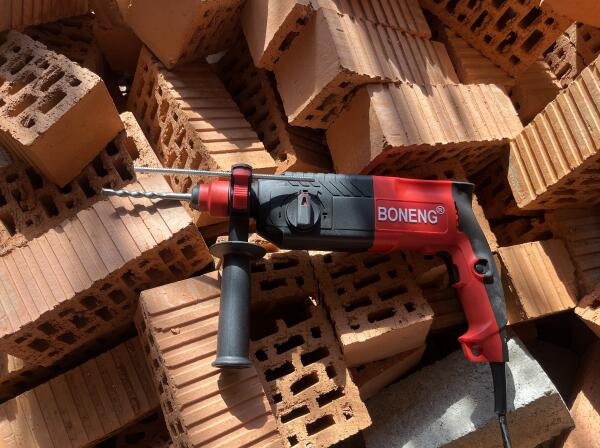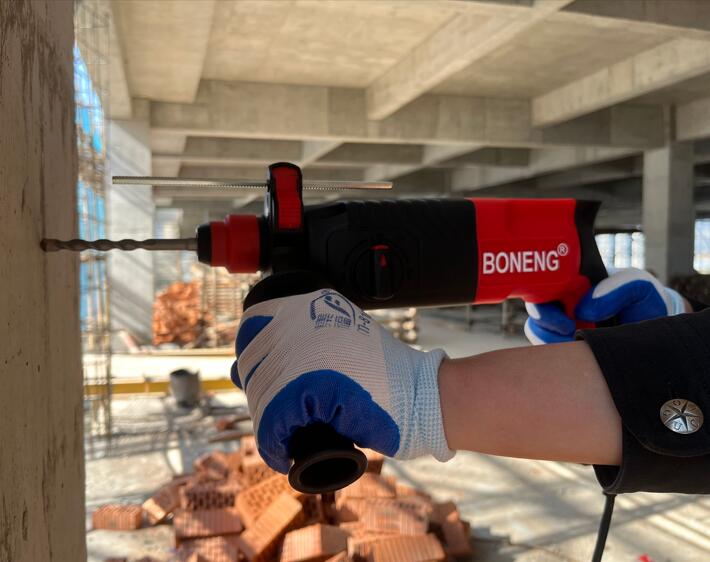What is the difference between SDS Rotary Hammer and Impact drills?
2024-01-18 | Blogs
Introduction:
The world of power tools is diverse, and two popular choices for drilling tasks are the rotary hammer drill and the impact drill. While they may seem similar at first glance, these tools serve different purposes, and understanding their distinctions is essential for selecting the right tool for the job. In this comprehensive guide, we'll delve into the features, mechanisms, and applications of rotary hammer drills and impact drills to help you make informed choices.

Rotary Hammer Drill:
Mechanism:
A rotary hammer drill utilizes a pulsating mechanism that combines rotation with a forward and backward hammering motion. This hammering action is ideal for penetrating tough materials like concrete and masonry.

Applications:
Best suited for heavy-duty tasks such as drilling into concrete, brick, and stone, rotary hammer drills excel in construction and demolition projects. They are particularly effective when dealing with hard surfaces that require significant impact force.

Versatility:
Many rotary hammer drills come with multiple modes, including standard drilling, hammer drilling, and chiseling. It's versatility and powerful drive makes it become a staple in the construction and renovation industry.

Impact Drill:
Mechanism:
An impact drill operates on a simple rotary motion but incorporates a striking mechanism that delivers rapid, short bursts of force in a rotational direction. This mechanism enhances the drill's ability to drive screws and drill into various materials.

Applications:
Impact drills are versatile tools suitable for a wide range of tasks, including drilling into wood, metal, and plastic. They are particularly effective for driving screws and fasteners, thanks to the additional impact force that helps overcome resistance.

Precision and Control:
Impact drills offer precise control, making them suitable for tasks that require accuracy. They are commonly used in woodworking and metalworking applications where controlled drilling and screwing are essential.
Key Differences
Primary Function:
The primary function of a rotary hammer drill is to provide a powerful hammering action, making it ideal for heavy-duty drilling into hard materials. In contrast, an impact drill focuses on delivering additional force for driving screws and fasteners.
Material Compatibility:
Rotary hammer drills are designed for demanding surfaces like concrete and masonry. Impact drills, while versatile, are better suited for softer materials such as wood and metal.
Applications:
Rotary hammer drills are go-to tools for construction and demolition projects, while impact drills shine in woodworking, metalworking, and tasks involving fasteners.
Mechanical Action:
The rotary hammer drill combines rotation with a pulsating hammering motion. On the other hand, an impact drill delivers rapid bursts of rotational force to enhance its drilling and driving capabilities.
Conclusion:
Understanding the differences between rotary hammer drills and impact drills empowers users to choose the right tool for specific applications. Whether you're working on a construction site, engaging in DIY projects, or handling professional tasks, having the appropriate drill for the job is essential. Consider the nature of your projects, the materials involved, and the level of impact force required to make an informed decision between these two powerful tools.

Related News
Choosing the Right Grease for Your Rotary Hammer
Rotary hammers are powerful tools designed for demanding applications in construction and masonry work. To keep these tools operating smoothly and efficiently, proper lubrication is crucial. One essential component for maintenance is the choice of grease.
What are safety rules when using a rotary hammer?
Using a rotary hammer involves handling a powerful tool that can be potentially hazardous if not used correctly. Adhering to safety rules is crucial to prevent accidents and ensure a safe working environment. Here are important safety rules when using a rotary hammer:
Unlocking the Power: What Are Rotary Hammer Drills Used For?
Rotary hammer drills have become indispensable tools in various industries and DIY projects, thanks to their versatile nature and robust capabilities. Let's delve into the details of what makes these tools so unique and the wide range of applications they serve.





